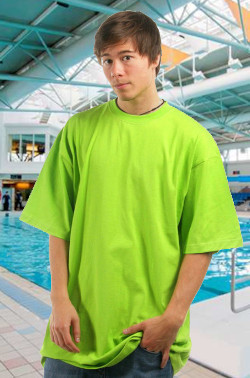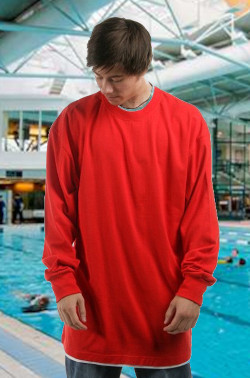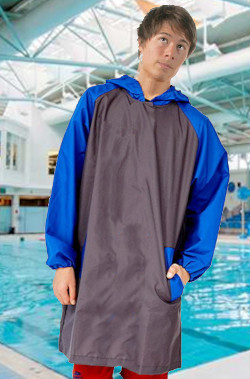Choose Your Kit for Swimming Lessons
When it comes to advanced swimming lessons, sportswear is the way to go because it is robust, designed to get wet and can withstand the rigors of lifesaving activities.
For pool lessons you want quick drying clothes that feel good both wet or dry and fit well in the water. This means you can get in and out of the water quickly and follow the lesson without distraction. You may want to try them on in your bathtub or shower first to ensure a good fit.
Put aside some sports clothes as part of your swimming kit. Always keep them in your swim bag when dry. Wet kit should be hung up to dry as soon as possible, otherwise it starts to rot and smell.
A good choice are three unlined clothing layers. Start swimming in the base layer, then add middle and outer layer over time. This will help you get used to the feeling of multiple clothing layers in the water. You could wear all the clothes you would normally wear for your watersports, including socks and shoes where applicable. The shoes should be made of manmade fabric, not leather.
It is important to note that some clothing can be difficult to put on or take off when wet, which can be frustrating. We recommend you keep your clothes on throughout the lesson.
Below you find a detailed list of kit for each stage of the swimming lessons.
Beginners: T-shirt and Shorts
Tee-shirt and shorts in bright colours are best for beginners, very easy to swim in. This is the basic swimwear you will need for all lessons. More will be worn on top later in the course.
You can wear your usual T-shirt and shorts in the pool. Nylon shorts and a swim shirt are easy to swim in and look great. They come in many colours and styles to make up stylish outfits.
Sportswear is best as it can cope with frequent immersions and is robust enough. Made from nylon or polyester it doesn't soak up much water and dries quickly. Any sports or footy kit will do as long as it is comfy and doesn't chafe. No need to buy special swimwear.
Put aside a few shirts and shorts as part of your swimming kit.
Always keep them in your swim bag when dry.
Wet kit should be hung up to dry as soon as possible, otherwise it starts to rot and smell.
Intermediate: Long-Sleeve Top and Long Pants
This additional clothing layer is deliberately used to slow you down and make swimming harder. It can be worn on top of the shirt and shorts from the beginner lessons, or on its own.
You'll be best prepared for emergencies if you swim in the kind of clothes you normally wear. They should be worn for most lessons because they take more swimming effort (resistance training).
Long trousers, jeans or tracksuit bottoms can be combined with a sweatshirt or hoodie. Cotton soaks up much more water and gets heavy, but it takes longer to dry out.
For resistance swim training, you will learn how to conserve your energy by optimizing your swim strokes, and continue swimming for longer to meet your goal. While you swim in swim briefs or such, you can get away with very bad swimming strokes. Almost anything works to some degree. Just look at a busy pool to notice this.
When you swim fully clothed for the first time
you may not move much at all.
This is where you can now tweak your swimming strokes to get faster.
Rapid progress can be made in reasonable time.
Advanced: Waterproof Clothes
Unlined anoraks and rain pants are best for water safety training and splash sports. Waterproof clothes are worn on top of the beginner or intermediate outfits for survival swim training or adventure swimming preparation.
These clothes cause some considerable drag when swimming and are thus useful for strength and endurance training. They are also ideal for any fun splash sports in the pool, like canoe and kayak lessons, or wild water games with frequent immersion.
Although they don't soak up much water, they hold pockets of air and water that swimmers should learn how to handle. Special techniques can quickly vent any air and drain water away.
Finally, students will learn how to make a buoyancy aid using their pants. It is important to get the right pants for it to easily inflate like a balloon. Some pants just do not inflate as the air escapes from the tiny pores in the fabric. Waterproof pants work best.
Summary
Improve your training by choosing the right swimming kit.
Any clothing worn for survival swimming, rescue training and assessments,
should be representative of the type of clothing in common use,
like what you may be wearing when faced with a potential rescue situation.
For best results you want quick drying clothes that feel good both wet or dry.
This means you can get in and out of the water looking good and feeling great.

Beginner Swimwear

Intermediate Swimwear

Advanced Swimwear
Now that you're properly dressed for your swimming experience,
choose a safe and shallow area to begin with, maybe chest deep.
This can be a beach, lake, or swimming pool.
As you gain strength and fitness, increase your training level.